Ten Years and Counting: VMA’s Valve Basics Celebrates the Power of Change
One of the founding members of VMA’s Education & Training (E&T) Committee, Ed Holtgraver (QTRCO), remembers the excitement created by the first Valve Basics Seminar held in Houston a decade ago.
#VMAnews #basics
“We were all getting our feet wet, learning how to present all this great information to people hungry to learn. We had seating for about 150 people but still had an overflow crowd. It was rewarding to see so many people eager for information.”
Those types of comments have continued over the 10 years that Valve Basics has been offered. As the industry changed, the program adapted so that the data presented is relevant, timely and not readily available anywhere else.
This is important in today’s rapidly evolving world, both to keep up with things and to attract new talent by showing them how interesting the industry is.
“Careers in the industrial valve segment are challenging, well-renumerated today and ever-changing as automation technologies advance,” says Bert Evans (Emerson), E&T committee member and control valve educator. “But we need to get the word out. VMA’s role is to support those in the industry and the industry itself. Today, much of the need is for foundational training for people who are new or are in new roles in their career,” he said.
The Valve Basics Seminar was developed to serve as a primer both for those new people and a refresher to those who want to brush up on valve technologies.
“Each of these instructors volunteers their time. They all have years of experience they share with the students, and every time they do a class, they work to ensure the content remains fresh and relevant.”
— Arie Bregman, DFT
Greg Johnson (United Valve), who was largely responsible for creating the program and was the E&T committee chairman for nine years, points out another need filled by the Basics program. He explains that while manufacturers and distributors generally train employees on their own products, Valve Basics was designed to get away from brand-specific teaching; instead, it focuses on the general types of valves, actuators and controls.
“This kind of all-around, basic information is essential for a thorough understanding of where the different products and equipment fit into the picture, where they go in the running of things, what some of the issues are, as well as what different technologies and methods of operation there are,” he says.
Most attendees are people already working in the industry in some capacity, whether it is in maintenance at an end-user plant, on the order desk at a distribution facility or on the shop floor at a valve manufacturing company. While it’s likely these people already received some training at their jobs, most companies don’t really have any broad official educational resources, notes new committee member Stephane Meunier (Emerson Automation Solutions). This is why he feels Valve Basics is essential.
Those coming into the industry or changing jobs within the industry often must understand pretty quickly where things belong and how they work.
“Basics provides that knowledge in one concise package,” Meunier points out.
Another of the founding members of the Basics programs, Arie Bregman (DFT), remembers the early vision of bringing in groups of people and giving them the benefit of all the wisdom and experience that the instructors have. This vision has been fulfilled with the current lineup of teachers.
“Each of these instructors volunteers their time. They all have years of experience they share with the students, and every time they do a class, they work to ensure the content remains fresh and relevant,” Bregman says.
While the material itself is important, Valve Basics has provided much more than just the technical information.
Meunier notes that once students have taken the course, they can go back to their own companies with newly gained knowledge about other kinds of valves besides those offered by their employers.
“By learning about others’ products, they can understand how to compete better, what the differences are, what challenges there are to using the different valves, and so much more,” he explains.
NEWBIES AND BEYOND
Another strength of the program is that people who attend realize there is always going to be something more to learn, according to Tom Waldmann (KITZ Corp. of America).
“Even I have learned a lot, and I’ve been in the business for 39 years!”
It’s not uncommon for long-term veterans to the industry who attended the course to express similar thoughts.
Program participants also say that Valve Basics helps to build enthusiasm for working in the industry.
“People new to the industry, right out of college or newly in a position, meet many people from many different companies, with a wide range of products,” Holtgraver says. “They see all of the various opportunities, whether it’s in sales or engineering and realize they can grow and change positions. They actually are more inclined to stay within the industry,” he says.
The program is also important for bringing new blood into the industry. Every time a class is held, VMA offers scholarships to students from local colleges. To date, the association has given well over 100 scholarships to students in the cities where the event has been held.
Committee member John Molloy (ASCO–Emerson Automation Solutions) points out that some of these young people may never have considered the valve industry as a viable career option before exposure to others from the industry and to the equipment and how it works.
Attending the basics program gives them an appreciation of the fact, “they are getting exposure to many types of products, and I think this opens their eyes to the possibilities of a career in this field,” he says. He remembers one student who told him he had always assumed he was going into electronic engineering but realized after learning about how fascinating the valve world was that there were other options.
The other most-common demographic served by Valve Basics are those that have come up through ranks from operations or maintenance or moved into a completely different field within their companies. Evans explains that, “They have to re-educate, and Valve Basics is a great place to do that.”
CONSTANTLY EVOLVING
Those who plan and volunteer to teach stress that a strength of Valve Basics is that it’s never a finished program, but rather “an evolving agenda,” points out committee member and check valve instructor Jeff Kane (DFT). “It’s just a little bit better and a little bit different every time it’s held.”
That factor is necessary because, “We must be in constant motion to keep up with our students’ demands. We listen to what they would like to see and hear,” he says.
That’s why the feedback from the nearly 2,000 students who have taken the course over the past decade is so vital. What attendees have to say is responsible for enhancements such as one of the most popular segments of the program today, the “Valve Petting Zoo,” which was introduced at the third event in 2010.
The zoo was needed because, “There is a lot of theory and plenty of information in the presentations, but there is nothing like hands-on experience to help students understand and retain that information,” Kane observes.
Among other changes made in response to student feedback from surveys and one-on-one discussions were adding example reference specs and standards in many of the modules and adding safety topics, as well as more specific application photos.
“I think VMA is providing a resource that is not comparable to anything else out there. No university has any major valve training—only theory and very little practice.”
— Stephane Meunier, Emerson Automation Solutions
Waldmann, who presents a session on quarter-turn valves, explains changes planned for the near future. “Right now, we are restructuring the program,” he says. “We’re splitting up the content between industrial valve basics and more advanced information on automation including actuation and controls and emphasizing areas of learning we haven’t focused on as much before.”
For example, in his area of quarter-turn valves, “I originally had an hour for the whole topic,” says Waldmann. “Now it will be two hours in two separate presentations: one for plug and ball valves, a second for butterfly.”
This is being done because, “Those are two of the largest growth areas in the industry. They’ve become more popular and there are more advances in ball and butterfly valves as far as the technology and capabilities compared to other types,” he explains.
Paul Souza (AUMA), current chairman of the committee, explains further about plans to break the course down into segments, which are being called Valves 101 and Valves 201.
“There are many busy people doing this training, so they don’t need to sit through a day of things that don’t pertain to them. They want to learn this or that portion. With this new plan, they can do that—or stay for the whole thing,” he says.
Many admirers of the Basics program wonder if Valve Basics 301 or 401 is in the works. Evans points out that, while that’s an interesting idea, more advanced training usually means learning more geared to specific products and applications.
Such learning is “probably something that would be handled by manufacturers, and for specific applications, by the end users,” he points out.
However, the VMA Education & Training Committee is exploring the addition of add-on courses on subjects such as valve repair or special applications.
In addition, VMA offers customized basic training in end-user facilities, with modifications made to the program to make the course suitable for specific industries, such as refineries or water/wastewater facilities or power generation.
But most people who participate are there for a basic learning experience. As vice president and general manager of DFT Inc., Bregman says he sends his newer employees to the Basics course to get a good base of knowledge. “One of the great values of this course has been training our distribution channel. It helps them get a solid basic education in all the different styles of ball vs. butterfly vs. gate valves. They can help guide end users since those buyers may not necessarily know what they want or need in a particular application.”
Bruce Broxterman, president of Richards Industries, has sent several employees to the Basics programs. “It’s a great way to expose people to the industry,” he says. “While our in-house training is valuable with our own products, Valve Basics gives them a solid foundation on the other valves that are available in the industry.”
Broxterman notes that everybody he’s sent to the class comes back enthusiastic about what they’ve seen. Also, “the manual created from the presentations is fantastic. Everyone who’s done the class keeps it close by and uses it frequently as a reference tool, something that they can refer to and revisit as time passes.”
WHAT PAST ATTENDEES SAY
Perhaps the greatest marketing tool the VMA Basics Seminar has is what comes from the mouths of those who have attended.
For example, James O’Brien, who attended the most recent event, says he found the petting zoo a key aspect of the learning. “The cutaways and getting to put your hands on products like packing were beneficial. Some engineers such as me are looking at computer monitors most of the day so real world, 3D examples are extremely helpful.”
Brittani Collins, a product manager at CNC Flow Control, has been in the valve industry 10 years and attended one of the earliest events. She went back for a return visit last year, “with a few of our employees who are new to the industry because it was such a great help to me during my first few years in oil & gas,” she explains. “Overall, both times I attended were extremely fulfilling to me. A wealth of information is covered and all of the speakers have deep insight from their many years of experience. You leave with an extensive collection of PowerPoints to reference in the future,” she said.
This passing of knowledge is a vital reason the program exists. As the “grey shift change” occurs and more boomers retire, passing on information to new employees becomes increasingly more challenging. VMA’s Valve Basics program is one way that manufacturers and end users can pass on the knowledge that might otherwise be lost as these veterans leave the industry.
KATE KUNKEL is a freelance writer and former senior editor for VALVE Magazine. JUDY TIBBS is VMA director of education and editor-in-chief for VALVE Magazine. Reach her at jtibbs@vma.org.
THE INDUSTRY’S BIGGEST CHALLENGE: RECRUITMENT
Paul Souza (AUMA) explains that it’s an uphill battle today to attract youth and build relationships with trade schools. His company has excellent apprenticeship programs with local trade schools, but Souza says it is difficult to break out of the relatively small geographical area of 25 miles around Canonsburg, PA where his company’s facilities are located.
When the suggestion was made to try to reach kids before they leave high school, he agreed. “We’ve gone into guidance offices in local high schools, even met with a group of students at one point. They were looking at an alternative to college, so we went in and showed them what we do,” he explains. “We brought an engineering manager, production manager and a sales expert to talk with them and let them know they don’t have to get a four-year degree to get a good, stable job.”
Many kids today have been convinced that the only way to get a job is to go into debt and get a university degree, he adds. “Unfortunately, many of those degrees are in subjects that are not useful in the real world, where the jobs are,” he explains.
Greg Johnson (United Valve) notes that the higher the socio-economic background of a student, the more difficult it is to attract them to the trades. “They get pressure from their parents and their parents’ friends to get a business degree. Manufacturing has a bad rap. It’s not just the valve industry, it’s all of manufacturing.”
Still, Johnson says he thinks the tide might be turning. What many are seeing today is that, “Young people who graduate with a certification in a trade get jobs right away. Their friends who went on to pursue a degree are often not able to get anything in their own field for a long time, so it’s making an impression.”
“Young people who graduate with a certification in a trade get jobs right away. Their friends who went on to pursue a degree are often not able to get anything in their own field for a long time.”
— Greg Johnson, United Valve
Industry, “is a tough sell,” notes Bert Evans (Emerson). “Even though the valve manufacturing sector can be very technical and has lots of exotic and exciting engineering stuff with computer controls and so forth, it doesn’t have the sex appeal of many other kinds of industries.” Evans says his company has taken the approach of pointing out the importance of the valve industry to young people. “We are ultimately making products that make the lights go on,” he explains. “We all use these products, but don’t think about how that happens.” Because of this, “We’re working on raising awareness, and how there are good jobs in the valve industry that make people’s lives better,” he adds.
Another complication in the matter has to do with succession. The last several years have been economically challenging for many manufacturers, so management is focusing on building business, and the more experienced staff are doing more work as their contemporaries retire, Stephane Meunier (Emerson) explains. “This is not a good succession plan,” he says. “I am a bit worried about the future. If there aren’t enough veterans of the industry in place, how will the knowledge be passed on? We need to be more focused on succession plans now,” he adds.
VALVE CAREERS INITIATIVE
While the monumental task of recruiting young people to choose careers in manufacturing and industry is being tackled by many large organizations such as The Manufacturing Institute, government agencies and other groups with greater resources than VMA, the association is doing its part via the Valve Careers (www.valvecareers.com) initiative.
At the centerpiece of the initiative is a robust social media campaign that posts two job openings from member companies every weekday. The campaign has been a great success with more than 7,500 followers on LinkedIn, between 40,000 and 60,000 impressions per month and more than 1,000 link clicks to member-company recruiting pages every month.
The initiative also includes a website that provides information about the industry, various career paths that can be pursued, and a list of current VMA and VRC (Valve Repair Council) members with links to those companies’ recruiting pages. Additionally, several videos feature interviews with young people discussing their positive experiences pursuing careers in the valve industry.
VMA’s social media team can coordinate with member-company recruitment efforts; members should contact Kelly Songer (kelly@project1421.com) to make sure their open positions are promoted. The #ValveCareers initiative can be found on social media by following the hashtag or the pages on LinkedIn (Valve Careers), Facebook (@ValveCareers) and Twitter (@ValveCareers). Member companies and their employees are encouraged to like, comment and share these posts on social media to spread the word of the many opportunities available in the valve industry.
This program is a complimentary service available to all current VMA/VRC members. To find out how to become a VMA or VRC member, go to www.VMA.org.
RELATED CONTENT
-
Check Valves: The Most Important Valves in Your Process System
Check valves, as critical as they are for flow system performance, often don’t receive the respect they are due, said Arie Bregman, vice president and general manager, DFT, Inc., in a recent VMA presentation.
-
An Interview With ... Matt Thiel
Matt Thiel, president of AUMA Actuators, was named chairman at VMA’s 2022 annual meeting.
-
Valves in Oxygen Service
In his presentation at VMA’s 2017 Technical Seminar, Kurt Larson, a process control engineer for Air Products, spoke about the inherent danger of the oxygen production business and how it is particularly important for end users and valve manufacturers to work closely together.




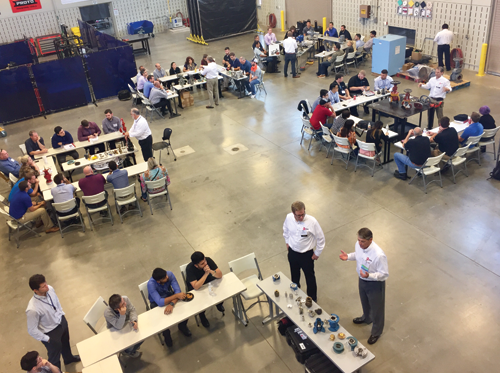
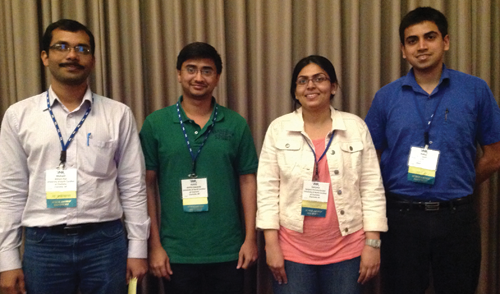
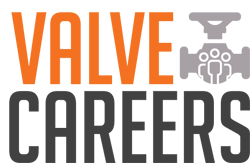
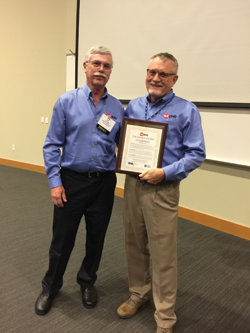
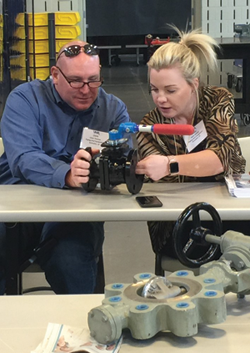






 Unloading large gate valve.jpg;maxWidth=214)